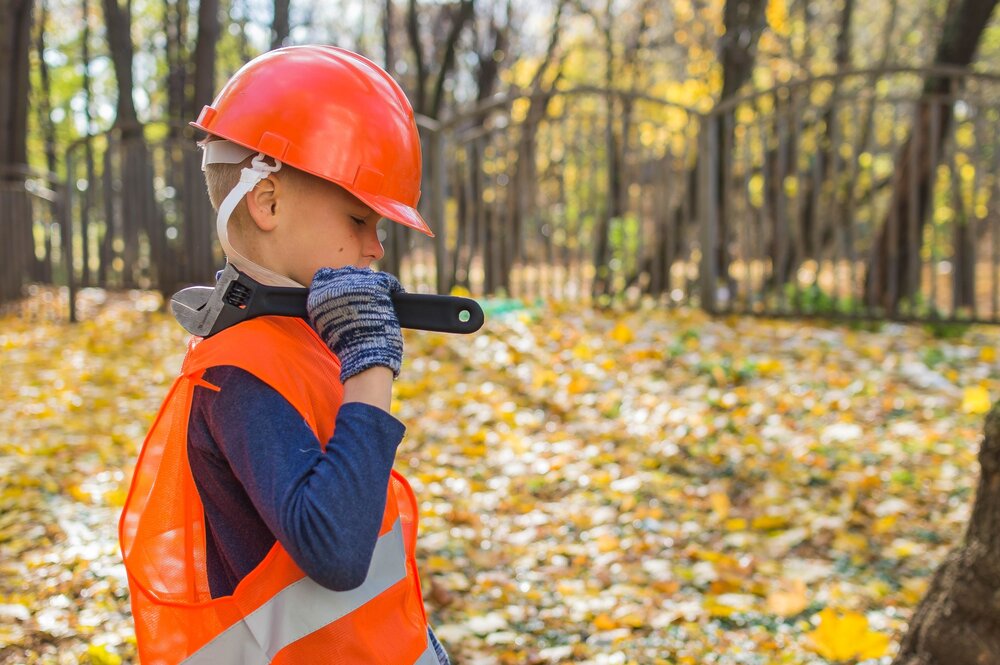How to Safety-Proof Your Home for Young Children

When you have a younger family member — or want to prep your home for potential buyers with children — you must consider household safety. Many everyday items that pose no risk to adults can injure, or even kill, a toddler.
Therefore, removing hazards should be one of your priorities. However, adult eyes can sometimes use a bit of guidance, especially those who have been childless by choice for a while. Here’s how to safety-proof your home for young children.
1. Upgrade Your Entryways
You can train older children to use caution when answering the door, but it’s much more challenging to keep curious toddlers’ hands from compressing the screen door lever and heading out unaccompanied. Knobs are harder to manipulate, but get in the habit of locking the door behind you as well. You’ll stay safer while preventing any wayward little ones who visit from making their escape.
If you’re looking to sell, make upgrading your garage door one of your priorities. Newer models come with photo-eye sensors that stop the door from closing on a small child. If you already have an upgraded model, please test and inspect it once a month to prevent potentially fatal accidents.
2. Watch Your Windows
Your doorways aren’t the only egress point for little ones — tiny tots can fit through that pane you opened for fresh air. According to the Children’s Hospital of Orange County (CHOC), 43% of all trauma cases stem from falls, and 35% of those involve windows.
If you consider renting your home instead of selling, you might want to install bars to attract higher-quality tenants. Some families will hesitate to ask about making improvements, and they can’t modify the building without your permission. This feature delights even those without children, as they add security without blocking the view.
3. Take a Kid’s-Eye View...
In his book, “Protecting the Gift,” safety expert Gavin de Becker recounts the experience of a mother whose infant nearly strangled on a simple piece of string when the other end became caught in a vacuum cleaner. Little eyes and hands are inquisitive, and young children often crawl on the floor where adult eyes seldom think to look.
When childproofing your home, get down on your hands and knees. If you’re a home tailor who stashes their spare button box under your couch, please relocate it to eliminate a potential choking hazard.
If your furniture has clearance, assume young children will get underneath. Even if you normally keep a weapon under your bed for home defense, please lock it in a secure gun safe well before the first home showing or hosting underage visitors. Lower kitchen cabinets containing cleaning supplies or drawers containing knives also require locking mechanisms.
4. ...But Keep Your Vision High
You might have heard horror stories about children climbing onto furniture, only to have it topple and crush them. Please don’t think this hazard doesn’t apply to you if you are childless — your foresight could spare a visitor an unthinkable tragedy.
Please don’t fall prey to myths such as “this armoire is too heavy to tumble.” Open drawers and added weight change the center of gravity. Anchor all furnishings that invite climbing to a wall to prevent accidents.
5. Evaluate Electrical Hazards
Plastic inserts alone might be insufficient to protect children from electrical hazards. Children can pry these out and stick them in their mouths, creating a shock and a choking danger. When preparing to sell, invest in outlet covers that prevent people of all ages from inserting anything but the intended plug into the wall.
Likewise, avoid extension cords — these invite chewing and create a tripping hazard. Unplug all appliances that aren’t in use and push them back from counter edges where curious hands could pull the cord and cause them to topple. Replace any faulty ones that could spark a fire. Doing so protects you, too.
6. Use Caution in the Kitchen
You probably heard the advice to bake a batch of brownies to make your house smell like a cozy home before a showing. If you use this trick, please ensure your oven door has a locking mechanism to keep little fingers from painful burns.
Likewise, please turn all pot handles to face the back so young children can’t grab a handle and scald themselves with boiling water. Use a safety gate to mark this room as off-limits to the toddler set.
7. Supervise Bathtime
Young children can drown in as few as 25 seconds, so please keep your bathroom equally off-limits. Unlike adults, children often don’t yell or splash when trouble strikes — you might not even notice the little one is missing until it’s too late.
Please install a locking mechanism outside your bathroom door to prevent toddlers from playing in the toilet or tub. If you have a young visitor overnight who bathes at your home, please don’t leave them unsupervised, even for a few seconds.
Safety-Proof Your Home for Young Children With These 7 Tips
Even if you aren’t a parent, you owe it to your visitors to safety-proof your home for young children. Doing so prevents tragedy and could potentially result in a higher sale price.
https://www.reallistingagent.com/blog/2021/6/21/how-to-safety-proof-your-home-for-young-children
Comments
Post a Comment